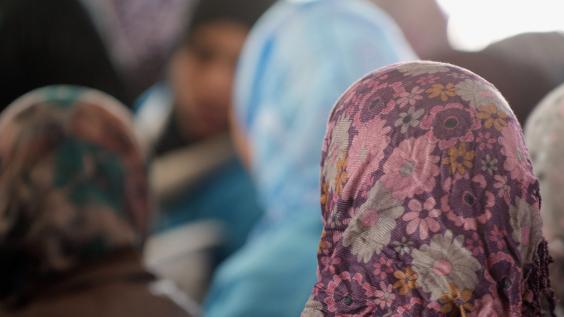Women and Political Leadership in an Authoritarian Context: A Case Study of the Sixth Parliament in the Islamic Republic of Iran

Table of Contents
Author(s)
Valentine M. Moghadam
Former Nonresident FellowFatemeh Haghighatjoo
Nonviolent Initiative for Democracy, Inc.To access the full article, download the PDF on the left-hand sidebar.
Introduction
When Iran’s new president, Hassan Rouhani, presented his proposed Cabinet to the Majles (parliament) in August 2013, one issue brought up in social media was the strange silence of the women members throughout the intensive four-day sessions to assess the ministerial nominees’ programs before the vote of confidence. None of the nine women parliamentary members (MPs) used the podium to object that the president had not nominated any woman as minister. Only on social media and Persian language television was there criticism for the absence of women ministers. Eventually, Rouhani promised to include a woman in his Cabinet and to promote women in middle managerial positions. Not only was this tokenism evidence of gender-blindness, but it also evinced historical amnesia, as it overlooked the intense campaigning for women’s greater participation and rights on the part of the 13 women members of Iran’s Sixth Majles during the reform era coinciding with President Mohammad Khatami’s two terms (1997–2005). That parliament is notable for its commitment to political and cultural reform and for the caucus that agitated for women’s greater presence. Among its accomplishments were passage of the UN’s Convention on the Elimination of All Forms of Discrimination against Women (CEDAW); raising the minimum age of marriage for girls from puberty to 13; and removing the ban on single young women traveling abroad on state scholarships.
Research and advocacy show that in order for historically marginalized groups to be effectively represented in institutions, members of those groups must be present in deliberative or decision-making bodies (Phillips 1995; Weldon 2002), such as political parties, parliaments, and national and local governments. And yet, across history, culture, and societies, women as a group have been marginalized from key decision-making arenas in government and the leadership of political parties, as well as the corporate sector, judiciary, academia, civil society, and media. Feminist social scientists argue that a polity is not fully democratic without adequate representation of women (Eschle 2000; Paxton and Hughes 2007, 2014; Phillips 1991, 1995). The United Nations Beijing Platform for Action (UN 1996, para 181) states: “Achieving the goal of equal participation of women and men in decision-making . . . is needed in order to strengthen democracy and promote its proper functioning.” The UN has proposed a 30% benchmark for women’s parliamentary participation, and many countries have heeded feminist calls for the adoption of quotas. Enhancing women’s descriptive representation is part of what may be termed the global women’s rights agenda and is explicitly mentioned in a number of international agreements.
International datasets now include indicators of women’s empowerment and gender equality such as parliamentary representation and the proportion of women in senior positions, indicators that feminist social scientists use to track patterns and trends across time and space. Many governments, however, remain oblivious to both international trends and the imperative to compensate for years of women’s exclusion from political decision making. Among them are the various governments of the Islamic Republic of Iran, in place since the 1979 revolution.
The literature on women, gender, and politics focuses on the Global North or on post-transition democracies (see, e.g., Krook and Childs 2010), but many countries remain nondemocratic. This article offers a case study of women’s struggles to obtain voice and influence within an authoritarian polity and a male-dominated political body through a detailed look at the workings of a women’s caucus within a functioning parliament, albeit one constrained by a particular ideology (political Islam) and a traditional outlook toward women. Drawing on the literature on women’s descriptive representation and “the politics of presence,” we highlight the potential of a women’s parliamentary caucus in the absence of a “critical mass” of women. The experience of one of us, Fatmeh Haghighatjoo, a key member of the women’s caucus in the Sixth Majles, confirms findings in the literature about sources of women’s access to power, gendered political opportunities available even in an otherwise untoward institutional environment, and the capacity of women political leaders with ties of civil society to effect some change. We end with a number of propositions on women and political power in authoritarian settings.
Published in Politics & Gender.


